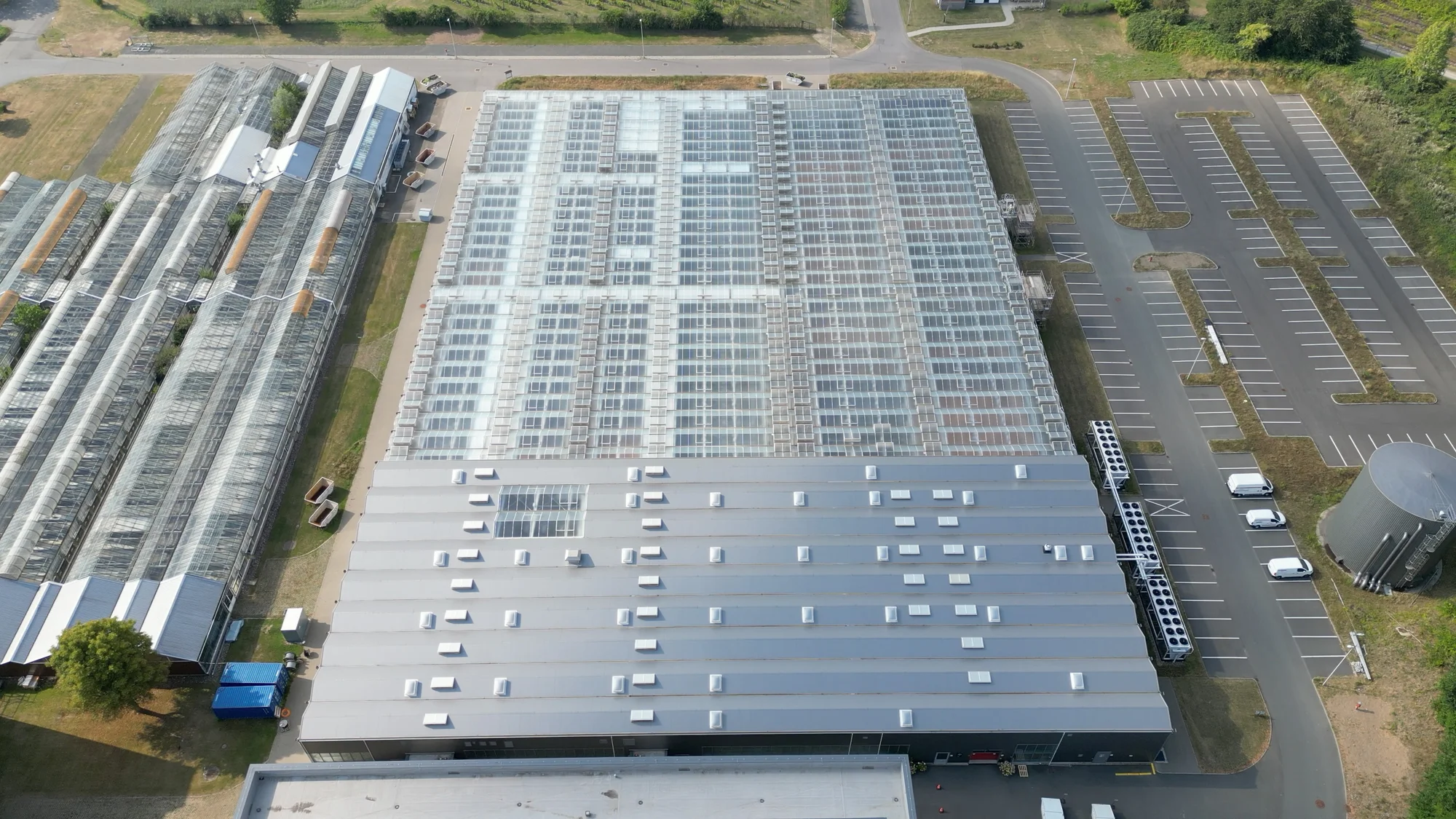Around the world, the agricultural industry is experimenting with digital solutions to help reduce waste and create more sustainable food production.
Monitoring everything from the weather, to soil quality and crop health, technologies like the Internet of Things (IoT) and 5G, can help farmers get the information they need to make informed decisions about things like when to water crops or use pesticides.
Currently responsible for 70% of freshwater consumption and producing around a quarter of global greenhouse gas emissions, any small steps this sector takes to transform could make a big contribution to the health of our planet.
A greenhouse for harvesting innovation
Teaming up with Bayer in Germany, we have launched the first 5G network in a greenhouse. With the help of fully autonomous robots and artificial intelligence (AI), it will be a space for insecticide researchers to gain new knowledge about plant health and to test new methods efficiently.
The greenhouse consists of 133 sections in which a wide variety of climatic conditions can be individually simulated, such as temperature and humidity or time of day. As a result, tests can be carried out under realistic, near-natural conditions.
Data from the greenhouse can be collected uninterrupted and on mass in near real-time, thanks to 5G, and will be automatically processed using artificial intelligence.
The findings can then be used for various research activities and predictive models, allowing new innovative solutions to be developed. Not only in the laboratory and greenhouse, but also in the field, in order to make the agricultural industry more sustainable.
A fruitful yield
In the UK, we’re already seeing how digital solutions can help farmers deliver quality products more sustainably.
Working with Marion Regan from Hugh Lowe Farms in July, we learnt how IoT technology is supporting them as they produce strawberries for the Wimbledon Championships.
Having supplied the prestigious tennis event for nearly 30 years, the farm’s operations must be as efficient as possible to meet demand, but it’s also vital that the strawberries arrive on site in the best possible condition.
By connecting every shipment through IoT connectivity, the team can locate and track every load on its journey to London. Monitoring the temperature and condition in real-time, they can rectify any discrepancies, ensuring tennis fans only receive the best product whilst minimising any waste.
On the farm, IoT technology is delivering live insights into MyFarmWeb™, our digital farming platform, to improve the growing phase. Providing data around soil and crop condition, Hugh Lowe Farms can water the fruit only when needed and use pesticides more effectively, helping to reduce greenhouse gases.
Fixing the food crisis
Improving crop care in this way can increase yields and, therefore, our food supply. Something that is becoming ever more important as our population continues to grow, diet demands change and the environment remains unpredictable.
The Food and Agriculture Organisation of the United Nations predicts the world population will reach 9.1 billion by 2050. To meet this growing demand, the world will need to produce 50% more food than at current levels.
By digitising farming and bringing technology into the agricultural industry, we hope to empower farmers to increase production sustainability while reducing their environmental impact.

























